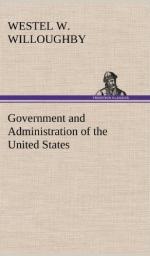The general rule is, as has been said, that the United States government possesses only those powers granted to it by the constitution. But here, in this clause just quoted, is a general grant of all powers necessary or proper for carrying into effect any of the powers particularly granted. Who or what is to decide just what powers are necessary and proper for the accomplishment of this object? Naturally people have not been able to agree upon the question of just what powers are constitutional or expedient as “implied” under this title of “necessary and proper” and this question has been largely instrumental in dividing the people in opposing political parties. There has always been a party, the members of which, favoring great powers for the States rather than for the Federal Government, have been “strict constructionists,” and have advocated a close and narrow interpretation of this clause of “implied powers.” From their desire to retain in the State governments as many powers as possible, they have been known as the “States’ Rights Party.” Opposing them has been the party of “loose constructionists,” the members of which have held to a free, liberal interpretation of the constitution, and have endeavored to increase the power of the Federal Government. There have never been political parties styling themselves “Strict Constructionists” and “Loose Constructionists,” for these are terms that have been used not as titles, but as definitions of different principles of constitutional interpretation. But by whatever name they may have been known, there have been, during the greater part of our history, these two political parties, the one holding to the principle of strict construction and States’ Rights, and the other to that of loose construction and federal power.
The second fundamental question spoken of in the beginning of this chapter as underlying national politics, is concerning the nature of our union and the rights of state nullification and secession.
A final answer to these questions cannot of course be here attempted, but that which can be done, is to state in a few words just what their meaning is, and the points upon which they have turned. When we come to the consideration of the course of politics in the United States we shall see the answers that history has given to them.
The government of the United States is the judge of its own powers, for it is in its own supreme judicial tribunal that the constitutionality of both State and Federal laws is finally determined. More than once has a practical answer been demanded to the question What is to be done by a State or States when, in their estimation, the National Government has transcended its powers and legislated in an unconstitutional manner? Obedience, nullification, or, in the last resort, secession from the Union, have been the various alternatives that have offered themselves to the States. Different views of the nature of our Union have sustained the propriety of the selection of different ones of these alternatives.




